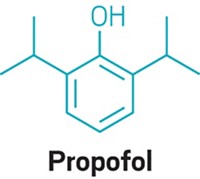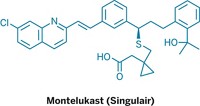Advertisement
Grab your lab coat. Let's get started
Welcome!
Welcome!
Create an account below to get 6 C&EN articles per month, receive newsletters and more - all free.
It seems this is your first time logging in online. Please enter the following information to continue.
As an ACS member you automatically get access to this site. All we need is few more details to create your reading experience.
Not you? Sign in with a different account.
Not you? Sign in with a different account.
ERROR 1
ERROR 1
ERROR 2
ERROR 2
ERROR 2
ERROR 2
ERROR 2
Password and Confirm password must match.
If you have an ACS member number, please enter it here so we can link this account to your membership. (optional)
ERROR 2
ACS values your privacy. By submitting your information, you are gaining access to C&EN and subscribing to our weekly newsletter. We use the information you provide to make your reading experience better, and we will never sell your data to third party members.
Pharmaceuticals
Discoveries: How Lithium Became A Drug
by Bethany Halford
March 25, 2013
| A version of this story appeared in
Volume 91, Issue 12
Accounts of lithium salts being used to treat numerous maladies, including those of a mental nature, date back to the 19th century. But John F. Cade, an Australian psychiatrist, gets the credit for its discovery as a treatment for mania.
Cade was a 37-year-old medical officer working on the outskirts of Melbourne when he published his now-famous 1949 report, “Lithium Salts in the Treatment of Psychotic Excitement,” in the Medical Journal of Australia.
During World War II, Cade spent three years incarcerated in a prisoner-of-war camp in Singapore. There, he came to believe that there must be some sort of underlying physical cause of manic-depressive illness. There seemed to be no correlation between the stress of the camp and who developed psychiatric illnesses. Also, when he did postmortem examinations of patients in the camp who suffered from psychiatric illness, Cade discovered they all had some sort of underlying pathology, such as a tumor.
Cade hypothesized that manic-depressive illness was not unlike thyroid conditions. In the manic phase patients had too much of some biochemical while in the depressive phase they had too little. After Cade returned from the war, he set up a laboratory in a converted wooden shed on the hospital grounds where he was working. He began a search for this “toxic agent” in the urine of manic patients.
He injected guinea pigs with urine from patients suffering from mania, melancholia, and schizophrenia, as well as with urine from healthy patients. The urine of the manic patients proved to be particularly toxic. Cade then injected the guinea pigs with purified nitrogen-containing compounds of urine and discovered that urea brought about death in the same way that the urine of manic patients did.
This didn’t explain why the urine of manic patients was more toxic than healthy urine to the guinea pigs, but it set him searching for chemicals that could reduce or amplify the effects of urea. He’d observed that uric acid slightly enhanced urea’s toxicity, but he had trouble getting the compound to dissolve in water.
So Cade turned to its lithium salt. When he injected guinea pigs with this compound and urea, it diminished the latter’s toxicity. Reasoning that the lithium was responsible, he injected the guinea pigs with lithium carbonate and urea and found the same results. Furthermore, large doses of lithium carbonate made the creatures lethargic.
Cade then started taking lithium carbonate to make sure the compound was safe. After convincing himself it was, he administered the salt to patients with mania, schizophrenia, and melancholia. “The effect on the patients with mania was dramatic,” write Philip B. Mitchell and Dusan Hadzi-Pavlovic, of Australia’s University of New South Wales, in a commentary on the significance of the discovery (Bull. World Health Organ. 2000, 78, 515). “The first patient to be given lithium had long been the most troublesome on the ward, but he settled down within three weeks and was able to leave hospital 12 weeks later.” The ion had no effect on those suffering from schizophrenia or melancholia.
Cade did not pursue lithium any further. And, as Mitchell and Hadzi-Pavlovic note, it’s surprising that anyone took note of his discovery because it coincided with accounts of lithium toxicity in cardiac patients in the U.S.
Mogens Schou, a Danish psychiatrist, and his colleague Poul Christian Baastrup undertook the research that would eventually convince the medical community of lithium’s efficacy in treating bipolar disorder. The U.S. Food & Drug Administration approved lithium for the treatment of mania in 1970.
“Cade’s discovery has been ungenerously described as serendipitous, and even Cade himself (a humble and self-deprecating man) described it in such terms,” write Mitchell and Hadzi-Pavlovic. “Such comments do not, however, acknowledge that many significant discoveries arise from keen, curious minds recognizing the importance of unexpected observations during systematic research.”
- Limits Of Lithium
- Discoveries: How Lithium Became A Drug
For a PDF of this article, visit http://cenm.ag/biopolar.




Join the conversation
Contact the reporter
Submit a Letter to the Editor for publication
Engage with us on Twitter